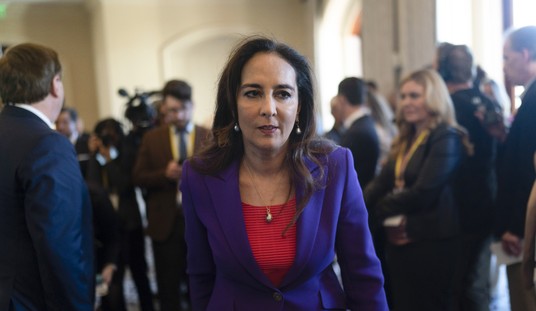
screengrab from https://youtu.be/BBafiBSSi4g
Yesterday in a lengthy press conference, President Trump was asked if he had considered using emergency authority to build a wall on the US-Mexico border without relying on an appropriation from the Congress.
I can do it if I want — absolutely. We can call a national emergency because of the security of our country. We can call a national emergency and build it very quickly. But if we can do it through a negotiated process, we’re giving it a shot.
(Watch Kevin McCarthy’s face from 0:19-0:24 for editorial comment.)
I’m not an authority on government appropriations by any stretch, but it strikes me as though that this might be not the easiest route to go in practical terms.
The president has the existing legal authority to construct the wall under the appropriation bill that was passed in March. That bill appropriated $1.6 billion for wall construction but the Democrats managed to add in two restrictions:
• An explicit prohibition against building on the Santa Ana National Wildlife Refuge. The refuge had been identified as a spot for early construction because the federal government already owns the land, but environmentalists and others were outraged by the prospect.
• Prohibition against building a solid concrete border wall. The bill directs that the money only pay for designs that exist on the border today.
The issue of whether the administration has the authority to build the wall is pretty much settled. The remaining problem is how to pay for it.
The obvious solution to the manpower part of the equation is using Regular, Guard, and Reserve engineering units of all services. There is ample technical skill within the “Tupperware hat” portion of the Army Corps of Engineers to do the engineering design especially since the wall design is pretty standard now.
The part of the problem I want to see them address is how they plan on buying/transporting materials in sufficient quantities. Those materials will have to be procured via contract. The contracts will have to be funded from a budget line-item. To increase the funding in the lines used to construct the wall, funding has to be taken from other accounts. This may or may not, depending upon the amount and the program, trigger a requirement for Congressional approval. It will require Congressional notification:
All appropriations committees require at a minimum notification of reprogramming, either in statute or as instruction in committee report, hearings, or some other informal guidance. Most agencies are also required to receive committee approval for reprogramming above a specified threshold. For example, at DHS, if an agency wants to augment a program, project or activity by $500,000 or 10 percent, whichever is less, congressional approval is required. Additionally, the department may not create or eliminate programs; may not reduce funding by 10 percent for any program, project or activity; or fund programs that have been denied or restricted by Congress. The Defense Department requires approval of procurement reprogramming if it exceeds $20 million, or 20 percent of the appropriated amount, whichever is greater.
While the courts have ruled that agencies aren’t legally required to follow nonstatutory limitations, violating instructions from the appropriations committee is generally not considered good practice. Getting Congressional approval is time consuming and, similar to the regular appropriations process, agencies must justify why they want to move the money. After spending a minimum of 9 months putting a bill together, it can be aggravating to appropriators when agencies come forward with proposed changes.
In the first place, there are always winners and losers. For every program that’s being augmented, there’s another program that’s losing funds. Every reprogramming must be offset dollar for dollar. In the second place, agencies do not do a great job of justifying why they want to move the money. Similar to supporting the President’s budget through Congressional Justifications, the burden is on agencies to prepare comprehensive and well thought out justifications for reprogrammings.
Finally, the biggest surprise in agency reprogrammings is often the source of funds. More often than not, agencies “find” unobligated funds. Time and time again, agencies operate under the premise that appropriators hate unobligated balances. Nothing could be further from the truth. Appropriators love unobligated balances; they just hate it when agencies hide them and then use them for a reprogramming.
I think that is is probably safe to say that if President Trump is sufficiently willful that he can find the resources to begin construction of more border wall than is currently funded.
As with so many other things, just because you can do something doesn’t necessarily mean doing it is particularly wise.
If Trump works around Congress on this, I think he will find it to be a Pyrrhic victory. Future authorization and appropriation bills will contain language specifically forbidding the use of funds for this purpose. Prohibitions are much easier to write into laws than authorities and Senate GOP appropriators are not going to be all that willing to give the Executive, even one of their own party, a blank check to spend money as he sees fit despite the appropriations bills.
My guess is that this is part of a negotiating strategy that has as its central message that the Administration is willing to shut down the government for as long as it takes to get its way. Considering the stakes…which is pretty much Trump’s credibility with the people who elected him in 2016…making a show of rolling out the military to start wall construction may not be a bad political move in the short run and it may be a move that Trump has no choice but to make.













Join the conversation as a VIP Member